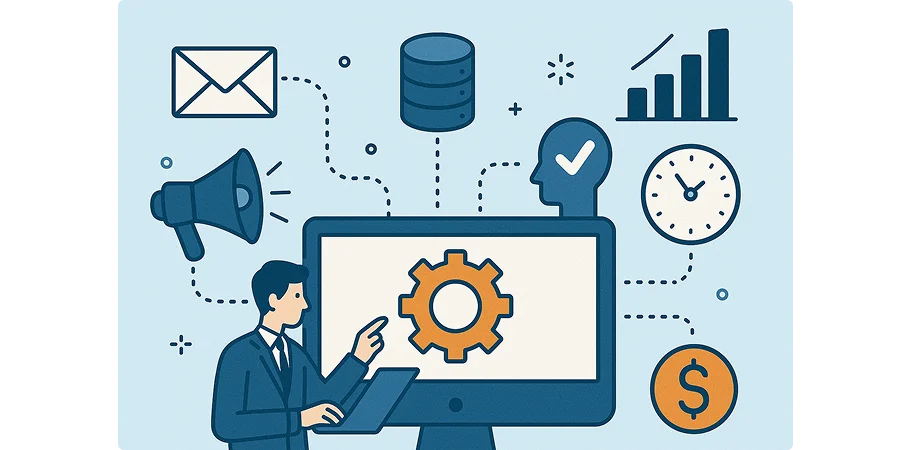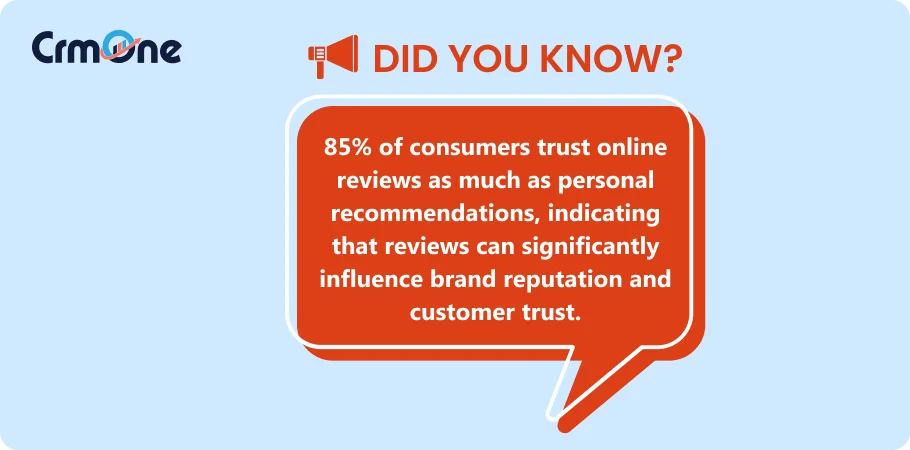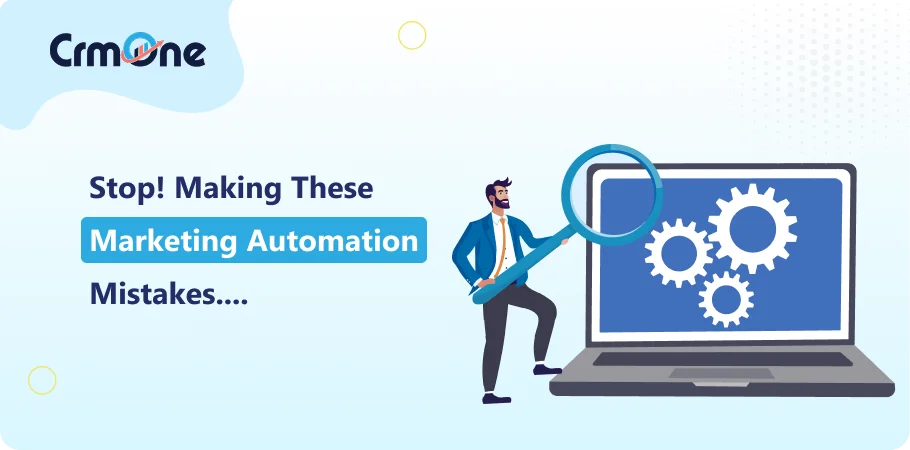We buy things because we either need them or because it is an effect of marvelous marketing efforts. The dynamics of marketing automation strategies have changed tremendously in the past 2 decades. We are not talking about billboards or those traditional ones to advertise your products on television. But the tactics have been redefined.
Social media marketing, Email marketing, and SMS marketing are trending ones now. We are catering to the personal needs of consumers rather than the generic ones. Ever since E-commerce has standardized the way shoppers are, as a company, we strived to evolve with time.
Note: 63% of marketers say they fail to personalize automated campaigns effectively.
Now the CRM tools, being so high-tech, have practically uplifted every brand to rely on AI and automation. The marketing sector is now directly and totally dependent on it. But are you even doing it the right way? There are so many blunders that a brand can make if one isn’t cautious with one’s tactics. So, the question is how to get past the common marketing automation mistakes.
What is Marketing Automation?

Simply put, it refers to the use of software and tech to align, automate, and compute tasks and workflows. It brings you varied opportunities to grow your business and make it Global.
From automating repetitive tasks to assigning email campaigns, social media posting, and lead nurturing and providing customers with relevant content. Basically, it takes care of everything.
The purpose of marketing automation is to save time, reduce manual efforts, and work towards the betterment of campaigns. It lets you apply new strategies, analyze them, and re-apply them to rectify the mistakes.
17 Common Marketing Automation Mistakes to Avoid in 2025 are:
1. Are you unable to manage your data?

55% of marketers report that inaccurate or incomplete data is a major barrier to successful marketing automation campaigns.
Look around, and there is everything that you need to do marketing. But is everyone a prospect? If I receive the same messages from a brand several times, I am going to unsubscribe because they should know what I want rather than just promoting products to the wrong customer.
Hence, inaccurate or incomplete data will lead to ineffective campaigns, wasted resources, and missed opportunities to connect with the right audience.
Clean and update your database regularly for better segmentation, targeting, and decision-making. Without accurate data, even the best tools and strategies will fall short of their potential.
2. Stop! If you are doing Over-Automation

Just because you have automation tools deployed in the system doesn’t mean that you over-rely on it. Always cross-check how your marketing campaigns are working. Check reports and performance metrics to know how many messages are being sent to customers and if they are responding positively or negatively.
Bombarding customers with too many automated messages will lead to frustration and annoyance.
In a recent survey, 80% of consumers reported that using chatbots increased their frustration levels, and 72% felt that interacting with chatbots was a waste of time.
These negative experiences will result in customers unsubscribing from services or switching to different brands.
Try to maintain a balance between automation and human interaction. Understand that complex issues require a personal touch that only human agents can provide. More than half of consumers believe that a phone call with a live agent offers the fastest resolution and best overall customer experience.
3. Don’t just sell, Interact! (Lack of Personalization)

Your generic messages might be good for some, but if you want to make an impact, engage with the customers and then reach out to them with personalized messages. One of the biggest marketing automation mistakes to avoid is not having personalization as a weapon.
It is prominent for building strong customer relationships and enhancing brand loyalty. Such messages that consider customer behaviors are six times more likely to convert than generic ones. So, tailoring your content to individual preferences will help you achieve the desired sales numbers.
It involves using data to target leads with content that includes their interests and behaviors. Make your customer’s shopping experience a great one by focusing on marketing efforts. Of course, when you have too much data, it becomes difficult to analyze everything with the help of AI and machine learning tools.
For example, companies like Netflix, Instagram, and Amazon use algorithms to suggest content based on user behavior.
4. Are you not reading Reports?

If you are already a reputed brand and have confidence that your products will sell without putting in effort, and without doing analytics, then you can be wrong. The requirements of customers are the largest variable dimension right now.
Without regular analysis, you will miss opportunities to identify what works and what doesn’t, which will make it difficult to optimize strategies. Track engagement rates, conversion rates, ROI, and focus on ongoing optimization.
Note: Companies that use data analytics are more likely to see improvements in their marketing efforts, with 71% reporting better decision-making as a result of using analytics.
You get valuable insights that will help you understand the audience better and define strategies as per that.
Google Analytics can track website traffic and behavior, while social media analytics tools can monitor engagement metrics like likes and shares. These analytics will pinpoint the issues, whether it’s messaging, targeting, or timing, and make adjustments to future campaigns.
According to a study by McKinsey, companies that adopt a data-driven approach to marketing are more likely to outperform their competitors.
5. Most of your customers are on Mobile.

I don’t remember the last time I bought something via Computer or Laptop. Apart from work, I don’t use a PC, and that’s the case with most people now.
As of 2025, mobile phones account for 66.05% of the world’s web traffic, making it crucial for businesses to optimize their campaigns for mobile users.
So go for mobile optimization because failing to do so can reduce a significant portion of the customer base, as users want seamless experience on all devices.
Ensuring that emails, landing pages, and websites are mobile-friendly is essential to maintaining customer engagement and conversion rates.
On average, people spend 4 hours and 25 minutes per day using their mobile phones, with this figure reaching 5 hours and 25 minutes in the United States. 58% of multi-device purchases are closed on Mobile, highlighting the convenience and accessibility that mobile devices offer.
The design team should focus on adapting to different sizes and devices. Make sure that emails are easily readable on small screens, landing pages load faster, and websites provide intuitive navigation.
6. Failure to Align with Sales Teams

Mis-communication between marketing and sales teams is one of the most common marketing automation mistakes. It can lead to inefficiencies and the loss of many opportunities.
You are left with inconsistent messaging that can confuse potential customers and undermine the trust in brands. Without follow-ups, you lose leads and sales chances.
According to a study by Forrester, companies with aligned marketing and sales teams experience 24% faster growth and 27% faster profit growth compared to those without alignment.
Work towards consistent messaging with the sales team. You have to develop a unified strategy that works well throughout the sales funnel. Hence, choose CrmOne for such integration so everyone remains on the same page.
Companies that align their marketing and sales teams see 36% higher customer retention rates and 38% higher sales win rates.
Do regular meetings to align goals and messaging, using shared data platforms to track customer interactions and develop joint strategies for lead nurturing and conversion.
7. Don’t misjudge lead quality!

It can lead to a reduction in sales and marketing efforts. Resources are wasted on unqualified prospects. So, instead of paying attention to high-value leads, you are stuck somewhere else. It results in wasted time and money, as well as in the effectiveness of strategies.
According to a study by MarketingSherpa, 61% of B2B marketers send all leads directly to sales, regardless of quality, which can overwhelm sales teams with unqualified leads.
Implement lead scoring to prioritize high-value leads effectively. It involves assigning points to leads based on user behavior, demographics, and other relevant factors. Using marketing automation platforms, the marketing team can optimize their efforts and increase conversion rates.
Analyze customer data to identify key indicators of lead quality. It includes engagement like email opens, form submissions, or social media interactions. Other factors that come into consideration are job title, company size, or the type of industry.
8. Make space for Customer Feedback.

‘Did you like the food?’ The managers come and ask when we are done with dinner in restaurants. They want to know our honest opinions, and we are eager to give them out and see if there are certain changes that they should make.
Customers are your key players in the marketing sector. Your efforts are only worth it if they buy from you. Ignoring customer feedback is another common marketing automation mistake to refrain from.
Customer insights are valuable for refining marketing campaigns, addressing pain points, and working on customer satisfaction.
According to a study by Gartner, 70% of customer experience projects fail due to a lack of understanding of customer needs, highlighting the importance of actively seeking and incorporating customer feedback.
Use surveys to collect data on specific aspects of customer experience. Get reviews to know customer perceptions and satisfaction levels.

Implement a systematic approach to collect, analyze, and take action based on insights. Then, use these strategies to refine marketing campaigns, improve product offerings, and enhance customer service.
9. Is your team not testing the campaigns?

A/B testing compares two versions of a campaign element to determine which one performs better. Without this, businesses risk investing in campaigns that may not fit with the target audience, leading to lower ROI.
Note: 60% of marketers use A/B testing to improve email open rates, highlighting its importance in campaign optimization.
It lets marketers to experiment with different variables such as subject lines, content and timing to see which one brings in best results. Testing subject lines determines which words or phrases increase open rates, testing content can reveal messages that are most suitable, etc.
Once the variables are selected, the campaign should be split into two groups: a control group and a test group. The results from each group are then compared to know which version performs better.
10. How Complex is the Workflow?

According to a report by Zapier, 63% of businesses struggle with workflow complexity, highlighting the need for simplification to improve operational efficiency.
When workflows become complex, there arises a difficulty in managing and monitoring, which results in errors and delays.
So, simplify the automation workflow for better execution. Align the processes to reduce the risk of errors, push towards transparency and improve overall productivity. When its done this way you can identify bottlenecks and areas for improvement.
Use visual workflow tools like flowcharts/diagrams to assist teams visualize everything. Eliminate unnecessary steps from the whole marketing process.
Companies that simplify their workflows see 20-30% improvements in productivity and efficiency.
Start by mapping out current processes. Analyze each step to determine it if is necessary to align. Automation tools should offer intuitive interfaces and easy integration with existing systems.
11. The Risks of Ignoring GDPR/Privacy Regulations

It can have severe consequences for businesses, including financial penalties and a loss of customer trust. The GDPR applies to the handling of citizens’ personal data, requires companies to obtain explicit consent before collecting or processing data to minimize data, and provides transparent communication.
Violating privacy laws can damage a company’s reputation and erode customer confidence, leading to long-term business impacts.
This marketing automation mistake can be avoided by obtaining clear and informed consent from customers before using their data. Collecting the data that is necessary for the specific purpose at hand. Be open about how data is collected, used, and stored.
Brands should regularly audit data to align with the GDPR principles. CrmOne offers double opt in process to building compliant mailing list. Hence such tools can be used to avoid legal risks.
Boost Your Business
Performance with CrmOne
Our experts will guide you through the most effective
ways to use CrmOne,
ensuring you fully leverage its
features for maximum impact on your business.
12. Overlooking Retargeting Opportunities

Don’t forget to retarget. Your customers might forget you but always remind them of your existence as a brand. Using content marketing, overlooking retargeting will lead to missed conversion chances.
It is for users who have shown interest in a product or service but have not yet converted, or you know that ‘Add to Cart’ and Oopsie, they just leave like that. So what you can do? Leave them as it was or work on different strategies.
Remind them of their initial interest and guide them through the sales funnel. According to AdRoll, 70% of website visitors do not convert on their first visit, highlighting the potential of retargeting to capture these missed opportunities.
Such campaigns allow you to stay top of mind with potential customers and increase the likelihood of conversion. It even improves brand awareness and reinforce marketing messages that makes it more likely that users will return to complete the purchase.
Use data to identify users who have shown specific behaviors, such as visiting a product page or abandoning a shopping cart. Here, you can create personalized retargeting messages.
13. The Impact of Unclear Call-to-Actions (CTAs)

CTAs are crucial element that guides users toward the desired outcome, whether its making a purchase, signing up for a newsletter or downloading content. Unclear or missing CTA will reduce the effectiveness of marketing campaigns, customers can become confued about what action to take next, etc.
CTAs that are clear and direct can increase conversion rates by up to 28% compared to vague or indirect CTAs.
It acts as a guidance in the marketing funnel. They create a seamless customer journey by providing a clear next step that be particularly effective in email marketing and landing pages.
Use specific language like “Sign Up Now” or “Get Started Today” to encourage users to take immediate action.
Focus more on clarity, visibility, and relevance. Use actionable language that communicates what users will gain by clicking the CTA.
For example, instead of ‘Learn More,’ a more effective CTA might be ‘Download Your Free Guide Now.’
14. Improper Branding can affect business negatively.

It can confuse customers and weaken a brand’s identity. When visuals, tone, and messaging change a lot between channels, it can harm the brand’s message. This makes it harder for customers to recognize and trust the brand.
Visual elements are key here to build a strong brand image. A study by Lucidpress found that 60% of marketers believe consistent Branding is crucial. This shows how vital it is for a strong brand presence.
Avoid this marketing automation mistake to create a recognizable and memorable brand identity. It ensures the brand’s message is clear and consistent. This reduces confusion and helps customers understand better.
Coca-Cola and Nike are famous for their strong Branding. This helps them gain global recognition and build customer loyalty. Logos, colors, fonts, and tone must be used and placed consistently in all marketing channels.
Automated emails, social media posts, and website content must show the brand’s true identity. Regular audits spot inconsistencies. They also make sure all campaigns meet the brand’s standards.
15. Not Integrating Social Media

Social media is no doubt a powerful tool in today’s generation. Ignoring marketing automation efforts will limit your reach and engagement potential.
Social media platforms are great for connecting with customers. They help share content and drive traffic to websites.
Businesses can use social media in automated workflows. This helps them amplify their message, boost brand visibility, and improve customer interaction.
Use centralized tools to handle multiple social media accounts all in one place. Automate tasks such as posting, responding to common queries and track engagement metrics.
Make sure social media content matches the brand’s messaging and visuals. This keeps things consistent on all channels.
16. Lack of training on high-tech tools

It can lead to underutilization and errors within an organization. Teams that aren’t trained struggle to use these tools well. This leads to a drop in productivity.
They can feel frustrated. The technology is complex, and they lack the skills to handle it well. Errors occur due to misunderstanding of how the tools work. The impact goes beyond individual team performance. It first impacts business operations. It can cause workflow inefficiencies and lead to data inconsistencies.
It can slow down innovation. Teams may not have what they need to explore new features or best practices. These improvements could make work processes better.
A Gartner study shows that 70% of employees feel they lack the skills for their jobs. This points to a strong need for ongoing training to close this gap.
Training can be delivered through workshops, online courses, or even peer-to-peer mentoring programs. Regular training keeps teams informed about new features and updates. This way, they can quickly adjust to changes in technology.
17. Setting Unrealistic Expectations

Expecting instant results from automation can lead to disappointment and frustration. Many businesses believe automation tools will solve their problems fast and deliver big returns.
However, automation is a long-term strategy that requires patience and continuous refinement.
It involves setting up systems, connecting them to workflows, and tweaking processes for better results over time.
Unrealistic expectations can lead to quick judgments about automation’s effectiveness. This may cause businesses to drop promising strategies too soon.
Initial results might not meet expectations. This can happen due to data quality problems, integration issues, or a lack of training.
Create realistic milestones. Remember, automation is a journey, not a destination. Focusing on small improvements helps companies refine their automation strategies. This way, they can meet their long-term business goals.
What is that you should do?
The above mentioned common marketing automation mistakes can lead to major loss in business and have a big dent on your reputation. Its better to take these points into consideration before launching campaigns.
Discuss with your team about the after effects of marketing efforts. Before, in the process and after the marketing is done, all three aspects should be treated with equal concentration and only then you can achieve your business goals.
Get started for Free
Start for free today. Boost your sales by clicking the Get Started button. With CrmOne, you can manage leads, sales, and customer service all in one place.

